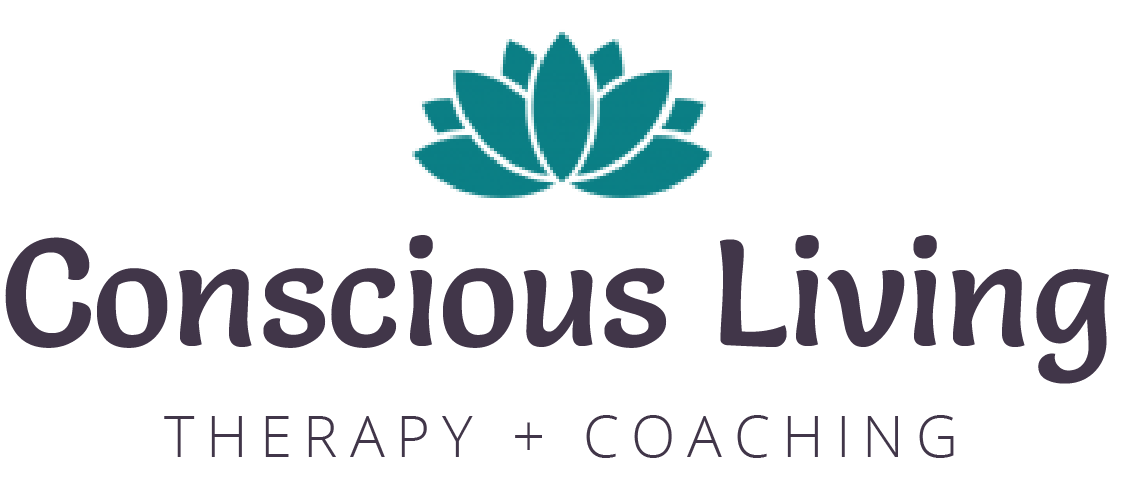Demystifying trauma – A complete overview on trauma and how to heal
“Trauma is not what happens to you. Trauma is what happens inside you as a result of what happens to you.”
– Dr. Gabor Mate
The topic of trauma is a big one, a personal one, and a challenging one, so before exploring this big, personal, challenging topic, let’s create a secure mental space – an observational place where we can feel safe while learning about this complex topic together. I know the topic of trauma can be triggering, so I invite you to take a deep breath, welcome your Healthy Inner Adult forward, and ground yourself in this present moment.
What is trauma?
Trauma is widely understood to be a deeply distressing, disturbing experience or a severe physical injury, but this definition only articulates part of the story. The word trauma comes from the Greek word for wound – the wound that occurs in response to something. In psychology, trauma is not something that happens to us, it’s what happens inside us as a result of what happened to us.
Different types of traumas
Acute vs Chronic Trauma
Acute trauma is trauma that is short-lived or results from a single incident. Chronic trauma is trauma that involves repeated or prolonged occurrences such as domestic violence or abuse.
Big-T Trauma vs Little-t Trauma
Big T Trauma can be classified as life-threatening or extremely intense experiences or events such as violent crimes, natural disasters, near death experiences, violence, war, etc. Because Big T trauma can have a severe and lasting impact on a person’s ability to function optimally in life, people with Big T Trauma often develop Post-Traumatic Stress Disorder (PTSD).
Little t Trauma includes intensely distressing events that have a profound, personal impact on an individual’s life such as emotional abuse, grief, loss, and bullying or harassment. There is a common misconception that Little t Trauma is less damaging or less significant than Big T Trauma, however evidence has shown that constant exposure to Little t Trauma (or chronic Little t Trauma) has a far more damaging impact on an individual than Big T Trauma, especially if the Little t Trauma occurred during childhood or adolescence when the brain and nervous system were still developing.
What is Complex Trauma?
If a traumatic experience involves more than one type of trauma, then the trauma is classified as Complex Trauma. For example, it is possible for an individual to experience acute, Big T Trauma and also chronic, Little T Trauma, and these collective experiences would be classified as Complex Trauma. Complex trauma involves severe, pervasive, invasive, or interpersonal experiences, and the impact of Complex Trauma is generally more wide-ranging and long-term than non-complex trauma.
What is Generational Trauma?
Generational Trauma – also called Transgenerational Trauma or Intergenerational Trauma – is a term used to describe what happens when a group of individuals collectively share a traumatic experience or lives through a horrific event such as community abuse, war, natural disasters, racism, etc. There is so much that could be said about generational trauma and how epigenetics can cause cycles of trauma to continue through generations, but for this post, the primary takeaway is this…
When a community or group of individuals experience severe trauma, the lasting impact can be so profound that it is not limited only to the individuals who directly experienced it. The trauma’s impact on the group can influence the children, grandchildren, and so on through biological, environmental, psychological, and social means.
What is Vicarious Trauma?
Vicarious trauma is the result of someone being exposed to the terrible experiences of others, which causes them to feel traumatized indirectly. Deep emotional reactions might be triggered by hearing about or seeing the suffering of others. People may begin to internalize the trauma, believing they are going through it themselves. It shows up as psychological and emotional symptoms including fatigue, anxiety, and a weakened sense of personal safety, which are comparable to those of acute trauma.
The impact of Trauma – How trauma affects us
The impact of trauma is in essence the real trauma itself, and unacknowledged and untreated trauma often impacts all areas of life. Trauma is known to significantly impact mental, emotional, psychological, relational, social, and physical wellbeing. How trauma affects an individual varies depending on age, social support, and environmental factors; however, the impact of trauma is considered wide-ranging and long-term due to the symptoms it evokes.
Common symptoms of trauma
1.) Altered cognitive abilities – Traumatic experiences can alter the way the brain works, and if trauma occurs during childhood or adolescent years when cognitive development is still in process, trauma can hinder or halt the brain’s ability to develop optimally.
2.) Dysregulated nervous system – Emotional regulation is a learned behavior, and infants and children are not born able to self-regulate. Trauma severely dysregulates the nervous system, and individuals who have survived trauma often live in fight-or-flight mode.
3.) Physical health concerns – Because the nervous system controls so much of body’s physiology, a dysregulated nervous system often leads to other physical ailments involving the immune system, sleep, digestion, hormone balancing, reproductive health, stress regulation, heart health, etc. Survival mode is exhausting, and the human body is unable to function properly while producing the high levels of cortisol and adrenaline necessary to sustain a chronic fight-or-flight state of being.
4.) Relational dysfunction – Trauma has a way of separating you from your sense of self and creating a chasm between your internal instincts and external perceptions. This disconnection can cause a sense of distrust not only toward oneself but also toward others. Because relationships may feel unsafe, a traumatized individual may emotionally and/or physically isolate themselves. Alternatively, a traumatized individual may consider an unhealthy relationship to be safe simply because it feels familiar.
“When all you know is fight or flight, red flags and butterflies all feel the same.” – Cindy Cherie
5.) Altered worldview – Trauma has a way of skewing not only one’s sense of self, but also one’s perceived reality. Traumatized individuals tend to see the world as an unsafe and overwhelming place – a place where it feels too difficult or even impossible to feel a sense of safety and belonging.
6.) Personal shame – Traumatic experiences can cause intense personal shame, and people who have experienced trauma often feel ashamed of who they are, what they are, and what they do or have done. This shame-based sense of self causes a ripple effect and influences how they show up in the world – for themselves and in relationships.
7.) Difficulty being present – The trauma may have occurred in the past, but the impact of trauma always shows up in the present, making the present moment a shadow of the past. Consequently, this makes it extremely challenging for individuals coping with past trauma to feel connected to the present moment, and they may feel emotionally detached often.
What happens if Trauma goes untreated?
Trauma wounds are considered life-long because they do not heal on their own. If the trauma is left unacknowledged and untreated, then the damaging impact of trauma continues to expose individuals to increased symptoms of dysregulation and dysfunction in all areas of life. For instance, fight-or-flight or survival mode may become the dominant state of being, relationships may become progressively codependent or abusive, physical ailments may become severe, and risk of mental illnesses such as anxiety, depression, mood disorders, and addictions may increase.
Trauma recovery – How to heal from trauma
“What does the nature of the plant demand for healthy development… Rather than looking to diagnose diseases or conditions, or behaviors, why don’t we look at what is the nature of human beings and what conditions are necessary for the healthy development of human beings, and what happens when those healthy conditions are not met?” – Dr. Gabor Mate
Traumatic conditions can undermine your personal development and compromise your wellbeing, but the reverse is also true. Optimal, healthy, nurturing conditions can bring about healing, and the pursuit of these conditions will create the environment needed to help you deal with the triggering emotions of the present moment.
Healing from unresolved trauma will likely involve a variety of treatment solutions, including:
1.) Creating a safe, nurturing, and healing environment
2.) Learning and practicing healthy coping strategies
3.) Confronting and processing difficult memories
4.) Seeking professional therapy or support
5.) Healing younger parts of you through parts work
6.) Finding healthy ways to grieve and process emotional pain
7.) Connecting meaningfully with others in healthy relationships
8.) Practicing self-care and reducing stress
9.) Practicing healing movement therapy or somatic therapy
10.) Exploring shadow work
11.) Calming and regulating your nervous system through mindfulness, meditation, healthy and nurturing habits, and/or trauma-informed therapy
Recovering from trauma is a process of helping every part of you discover that you are no longer there in the traumatic past. This process takes time, but recovery and post-traumatic growth is possible. One of the deep dark truths I’ve learned about healing is that darkness cannot overshadow your truest self. There is always real hope, and healing is always possible.
How long does it take to heal from trauma?
Because trauma impacts each of us in a unique way, everyone’s healing journey and timeline is going to look a bit different. There is no set time frame for healing from trauma, and it is normal for there to be a growing-pain period or a messy middle time as you journey towards healing. That said, creating safety within yourself and deepening your connection to your Healthy Adult Self gets easier as you go, and the further you go, the more healing you experience.
When to seek professional, trauma-informed help
Healing from trauma is a personal journey that can feel overwhelming at times, and having a compassionate, trauma-informed therapist or coach to help guide you through the ups and downs of healing can make all the difference. I’ve seen and been to the darkest places, and I know the pain trauma can inflict. Please know, you’re not alone, and help is available. If you’d like to explore therapy or coaching with me, please contact me. I’d love to hear from you.
Let’s Connect
Hi there! I’m Jenny, a licensed therapist and Certified Adult Chair® Master Coach.
Hi there! I’m Jenny, a licensed Holistic Therapist (LISW-CP) and Certified Adult Chair Master Coach. I combine both therapy and coaching methodologies to provide my clients with a holistic perspective and the techniques they need to flourish. Rediscovering who you were always meant to be is an act of courage, and radical self-love can turn unconscious paralysis into conscious, authentic growth. Learn more about me here.




